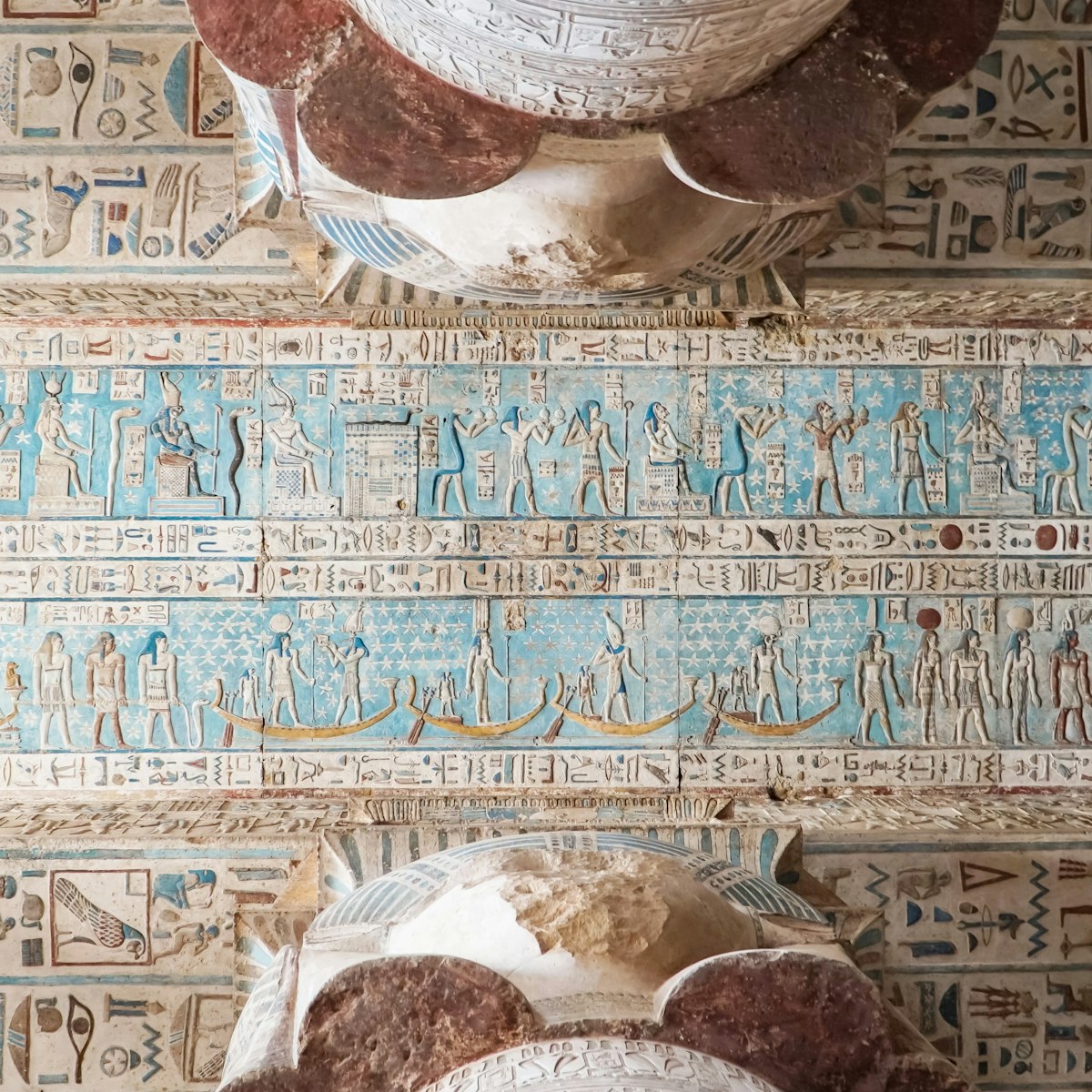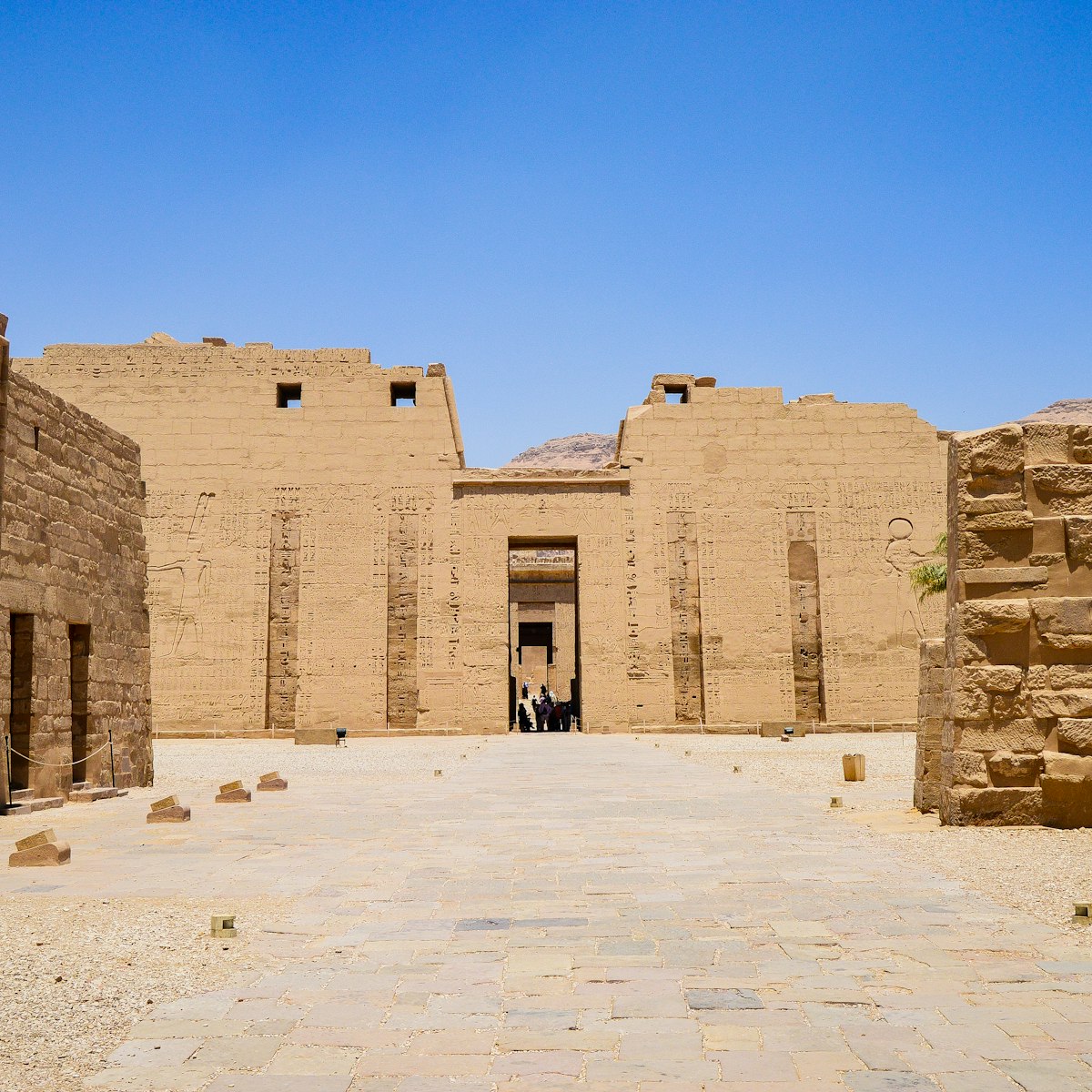The tomb of Ramose, a governor of Thebes under Amenhotep III and Akhenaten, is fascinating because it is one of the few monuments dating from a period of transition between two different forms of religious worship. The exquisite paintings and low reliefs show scenes in two different styles from the reigns of both pharaohs, depicting Ramose’s funeral and his relationship with Akhenaten. The tomb was never actually finished, perhaps because Ramose died prematurely.
Next door is the tomb of Userhet, one of Amenhotep II’s royal scribes, with fine wall paintings depicting daily life. Userhet is shown presenting gifts to Amenhotep II; there’s a barber cutting hair on another wall; other scenes include men making wine and people hunting gazelles from a chariot.
The tomb of Khaemhet, Amenhotep III’s royal inspector of the granaries and court scribe, has scenes on the walls showing the deceased making offerings, the pharaoh depicted as a sphinx, the funeral ritual of Osiris and images of daily country life as well as official business.







